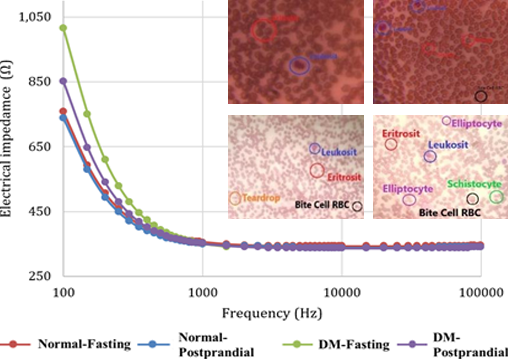Comparative electrical impedance analysis of blood in normal and diabetes mellitus patients under fasting and postprandial conditions
DOI:
https://doi.org/10.59190/stc.v6i1.330Keywords:
Bioimpedance Analysis, Blood Impedance, Glycemic Monitoring, Red Blood Cells, Type 2 DiabetesAbstract
Type 2 diabetes mellitus (T2DM) alters blood biophysics, yet most bioelectrical impedance spectroscopy (BIS) studies examine only glucose and overlook hematological or morphological factors. This comparative study analyzed venous blood samples from normoglycemic individuals (n = 5) and type 2 diabetes mellitus (T2DM) patients (n = 5) under fasting and postprandial conditions. Assessments included glucose, hemoglobin, complete blood count, erythrocyte morphology, and wide-band BIS (100 Hz – 100 kHz). T2DM patients consistently showed higher impedance than controls, with partial reductions postprandially but clear intergroup separation. Morphological analysis revealed an increased number of abnormal erythrocytes, including schistocytes, teardrops, and elliptocytes, consistent with membrane remodeling and hemorheological disturbance. Wide-band BIS detected frequency-dependent signatures shaped by glucose, hemoglobin, membrane capacitance, and cytoplasmic resistance. By integrating biochemical, hematological, and morphological data, this study established a multidimensional electrohematological profile of diabetes. Including both fasting and postprandial states addressed a key gap in previous BIS work and emphasized the clinical relevance of postprandial variability. These findings highlight BIS as a promising, non-invasive adjunct for diabetes monitoring, with translational potential for hybrid diagnostic strategies, wearable sensors, and point-of-care technologies.

Downloads
Published
How to Cite
Issue
Section
License
Copyright (c) 2025 Chomsin Sulistya Widodo, Farid Khoriyanto, Ekowati Retnaningtyas

This work is licensed under a Creative Commons Attribution 4.0 International License.










